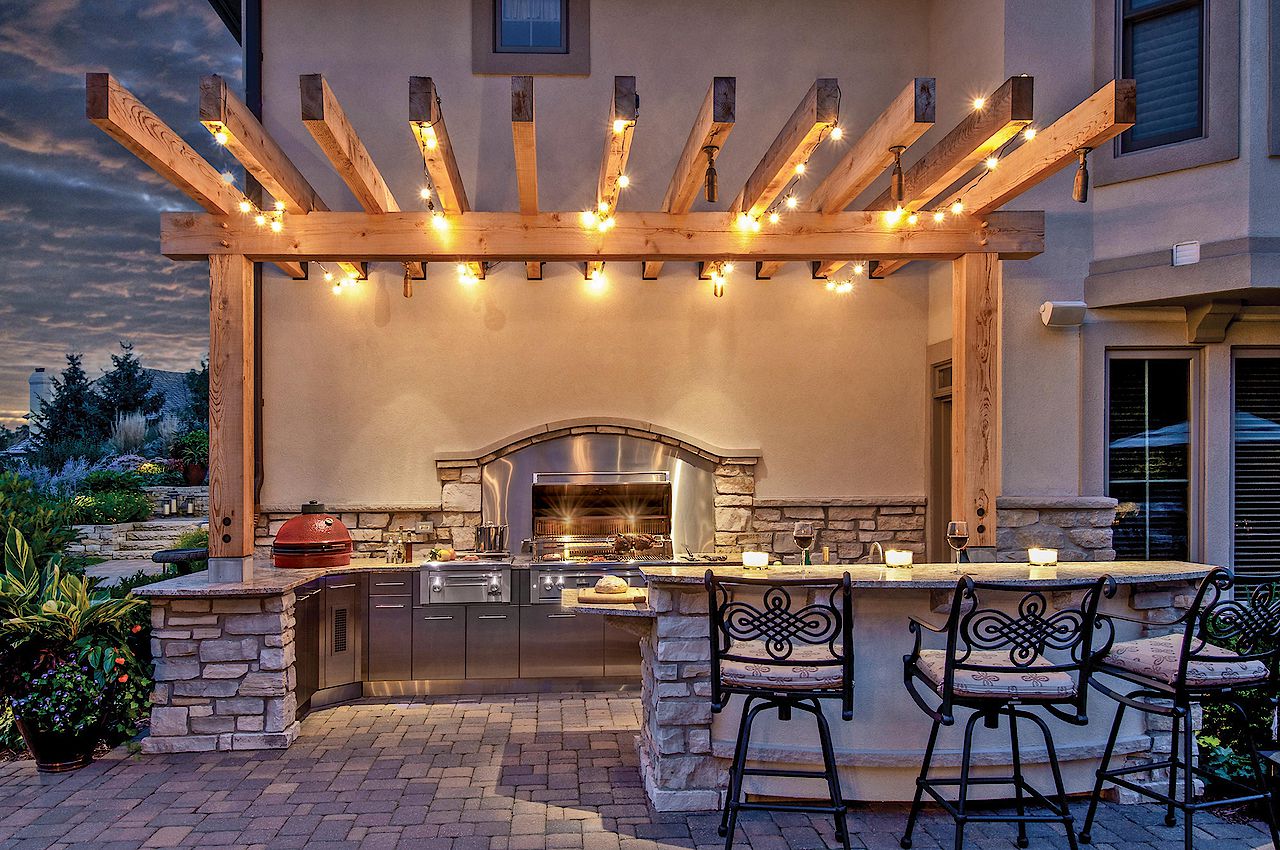Designing the perfect outdoor kitchen requires careful planning to create a functional, stylish, and enjoyable space for cooking, dining, and entertaining outdoors. Here are nine design tips to help you plan the perfect outdoor kitchen:
- Evaluate Your Space:
- Assess your outdoor space, including size, layout, and existing features, to determine the best location and layout for your outdoor kitchen. Consider factors such as proximity to the indoor kitchen, access to utilities (water, gas, electricity), sun exposure, views, and privacy.
- Plan the Layout:
- Design a functional layout that accommodates your cooking and entertaining needs. Arrange key elements such as the grill, countertops, sink, refrigerator, storage cabinets, and seating areas in a logical and efficient configuration. Ensure there is ample space for food preparation, cooking, serving, and socializing.
- Choose Quality Appliances:
- Invest in high-quality outdoor appliances that are durable, weather-resistant, and suitable for outdoor use. Select a built-in gas grill, smoker, pizza oven, or outdoor range that meets your cooking preferences and complements your design style. Consider additional features such as side burners, warming drawers, and beverage coolers for added convenience.
- Select Durable Materials:
- Choose durable and weather-resistant materials for countertops, cabinets, flooring, and finishes that can withstand outdoor conditions. Opt for materials such as stainless steel, concrete, natural stone, tile, or outdoor-rated wood that are easy to clean, maintain, and resistant to heat, moisture, and UV exposure.
- Create Shelter and Shade:
- Provide shelter and shade to protect your outdoor kitchen from sun, rain, and wind. Install a pergola, canopy, awning, or umbrella over the cooking and dining areas to provide shade and create a comfortable outdoor living space. Consider incorporating ceiling fans, misters, or heaters for added comfort in all seasons.
- Include Ample Storage:
- Incorporate ample storage space for utensils, cookware, dishes, and pantry items to keep your outdoor kitchen organized and clutter-free. Include cabinets, drawers, shelves, and storage bins that are waterproof and weatherproof to protect your belongings from the elements.
- Integrate Lighting:
- Illuminate your outdoor kitchen with adequate lighting to enhance safety, functionality, and ambiance. Install a combination of task lighting, ambient lighting, and accent lighting to illuminate cooking areas, countertops, dining areas, and pathways. Consider options such as LED strip lights, pendant lights, sconces, and landscape lighting for added drama and visibility.
- Add Comfortable Seating:
- Provide comfortable seating options for dining and lounging that encourage relaxation and socializing. Choose weather-resistant outdoor furniture such as dining tables, chairs, benches, bar stools, and lounge seating with cushions or pillows for added comfort and style. Consider incorporating built-in seating, seating walls, or outdoor sofas for flexible seating arrangements.
- Enhance Ambiance with Design Elements:
- Enhance the ambiance of your outdoor kitchen with design elements such as landscaping, water features, fire features, outdoor art, and decorative accents. Incorporate natural elements such as plants, flowers, trees, and herbs to soften the space and create a lush outdoor oasis. Add a fire pit, fireplace, or fire table for warmth, ambiance, and focal point.
By following these design tips and considering your specific needs, preferences, and budget, you can create the perfect outdoor kitchen that enhances your outdoor living experience and becomes the heart of your backyard entertainment area.
